How do you model Elliot switch stands?
12




















12
How do you model Elliot switch stands?
|
OK, maybe that's not exactly the right question.
Post-harp C&S switch stands look a lot like the Elliot stands (used by the D&RGW) -- but they're not exactly the same (the C&S versions have a half-moon under the throw-rod on the base plate, and the top plate is thicker than D&RGW equivalents). Were they indeed Elliots (perhaps of a slightly earlier or later design?), or just something similar? In any case, how do you folks model them? Scratch built? Or is there a vendor which does them that I'm unaware of? (I'm in HOn3, but I'd be interested in what others are doing in other scales either way.) Cheers, Jeff. 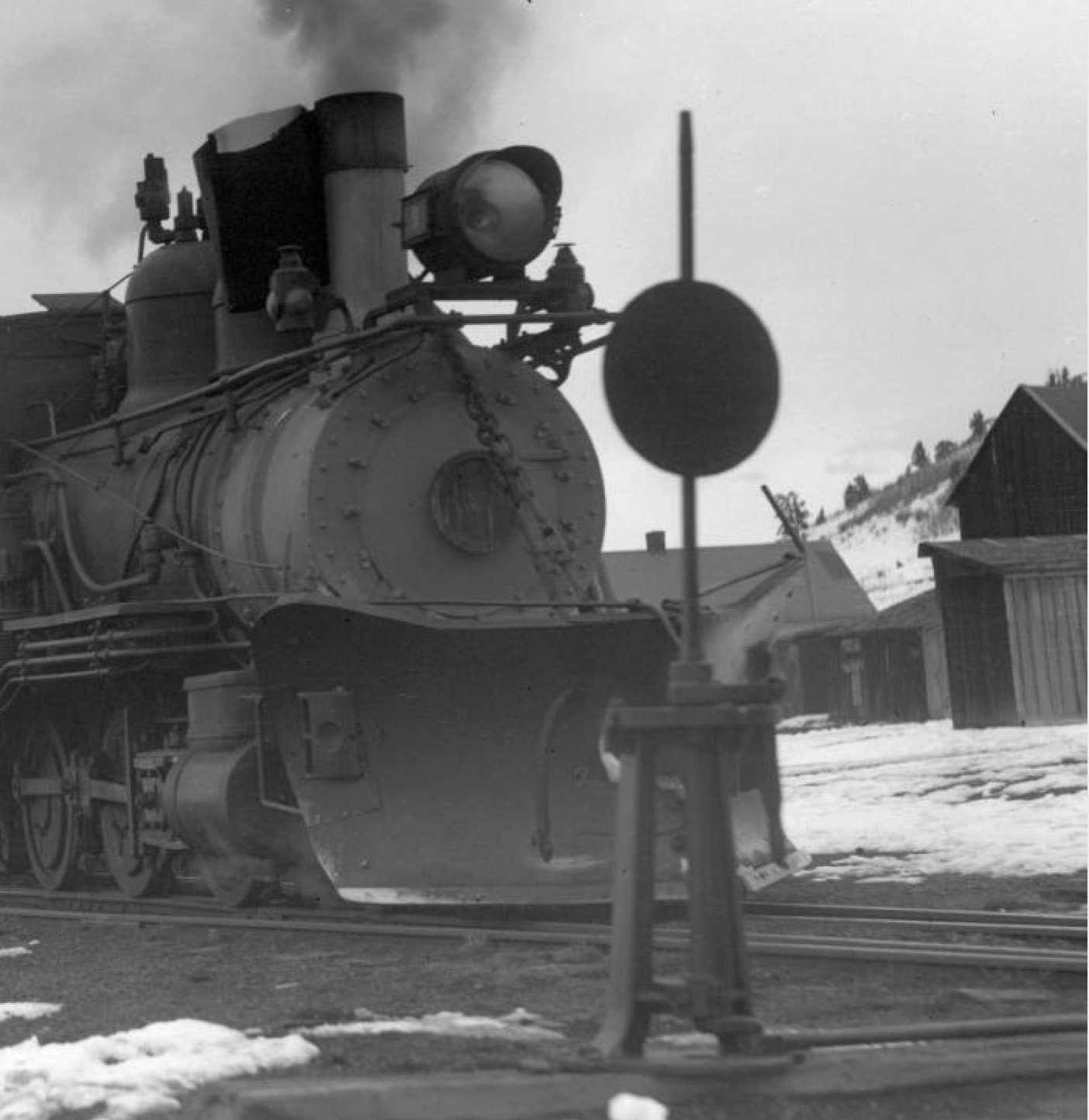 http://digital.denverlibrary.org/cdm/singleitem/collection/p15330coll22/id/42489/rec/57 |
Re: How do you model Elliot switch stands?
|
I bought some from PBL. I got brass thinking they would be more durable in the foreground where arms and elbows are the natural predator of details, but building one up, I am finding the brass is very soft.
Keith Hayes
Leadville in Sn3 |
Re: How do you model Elliot switch stands?
|
Harry Brunk did an article for RMC on making these switch stands. I'm going to try making them in O scale one of these days.
|
Re: How do you model Elliot switch stands?
|
Definitely Elliot Frog&Switch Co East St Louis Mo. I made mine out of brass, but then I was working in 3/4" scale at the time.
UpSideDownC
in New Zealand |
Re: How do you model Elliot switch stands?
|
In reply to this post by Tim Schreiner
Harry Brunk's article would be great, as he models in my scale.
I found another reference for Model Railroader, May 1987. Is that the one you're thinking of? I've ordered a copy from Kalmbach, but they estimate 4 - 5 weeks (!) for shipping. Anyone be willing to scan that article for me in the meantime? Thanks, Jeff. |
Re: How do you model Elliot switch stands?
|
In HO, I just cast up the ones that Harry Brunk gave me the masters to...
Rick |
Re: How do you model Elliot switch stands?
|
Hi Rick,
> In HO, I just cast up the ones that Harry Brunk gave me the masters to… Any chance of them finding their way into the Labelle catalog? Cheers, Jeff. |
Re: How do you model Elliot switch stands?
|
In reply to this post by Jeff Young
You may be right. I will have to dig out my copy of the article.
|
Re: How do you model Elliot switch stands?
|
From what I have, the Half-moon base type is the 3-way and the I++I shaped base is for the 2-way. I haven't seen a 3-way version to my recollection on the Grande.
More to come on this soon.
UpSideDownC
in New Zealand |
Re: How do you model Elliot switch stands?
|
Check out Roper's Snap-shot Saturday no.43!
|
Re: How do you model Elliot switch stands?
|
BTW, I photoshopped the top & bottom halves of Joe's excellent drawings (from Roper's Snapshot #43) into single images if anyone wants a copy of them.
(I'm happy to post them too, but I'm not sure what the netiquette is regarding that.) Cheers, Jeff. |
Re: How do you model Elliot switch stands?
|
In reply to this post by Jeff Young
Jeff.
If you're in HO Scale, Drop me a line at LaBelle and I'll throw the mold in the casting machine the next time that I'm making parts. |
Re: How do you model Elliot switch stands?
|
I wish someone made them in O scale.
|
Re: How do you model Elliot OR Buda switch stands?
|
I have always thought that these Highstands were called Elliot based on the one noted at the CRRM with a label "C&S" that had Elliot cast lettering. At the CRRM in 1992 I videoed with a tapemeasure for a recreation but now cannot view that footage. In the mid-90's I had asked Joe Crea if he would get some additional measurements from there, hence those wonderful drawings shown in Roper's Snapshot Saturday #43 http://coloradosouthern.blogspot.com/2015/05/ropers-snapshot-saturday-no43.html
The difference also noticed and mentioned by Jeff, is the Baseplate. The dogbone shaped one is at the CRRM (same as at Chama) its companion "Call" (shorter 3-way version) has this button base. I modelled at the time in brass one of each as I love variations on a theme  Now I'm in the process of having the parts profile-cut for a 1:1 version for my Tramway, and have to go with the cheaper dogbone, as I can fabricate the Baseplate part cheaper. A 22" x 15 x 1" plate is expensive. Now I'm in the process of having the parts profile-cut for a 1:1 version for my Tramway, and have to go with the cheaper dogbone, as I can fabricate the Baseplate part cheaper. A 22" x 15 x 1" plate is expensive.
I haven't yet noticed a picture of a true in the field C&S with the dogbone baseplate. 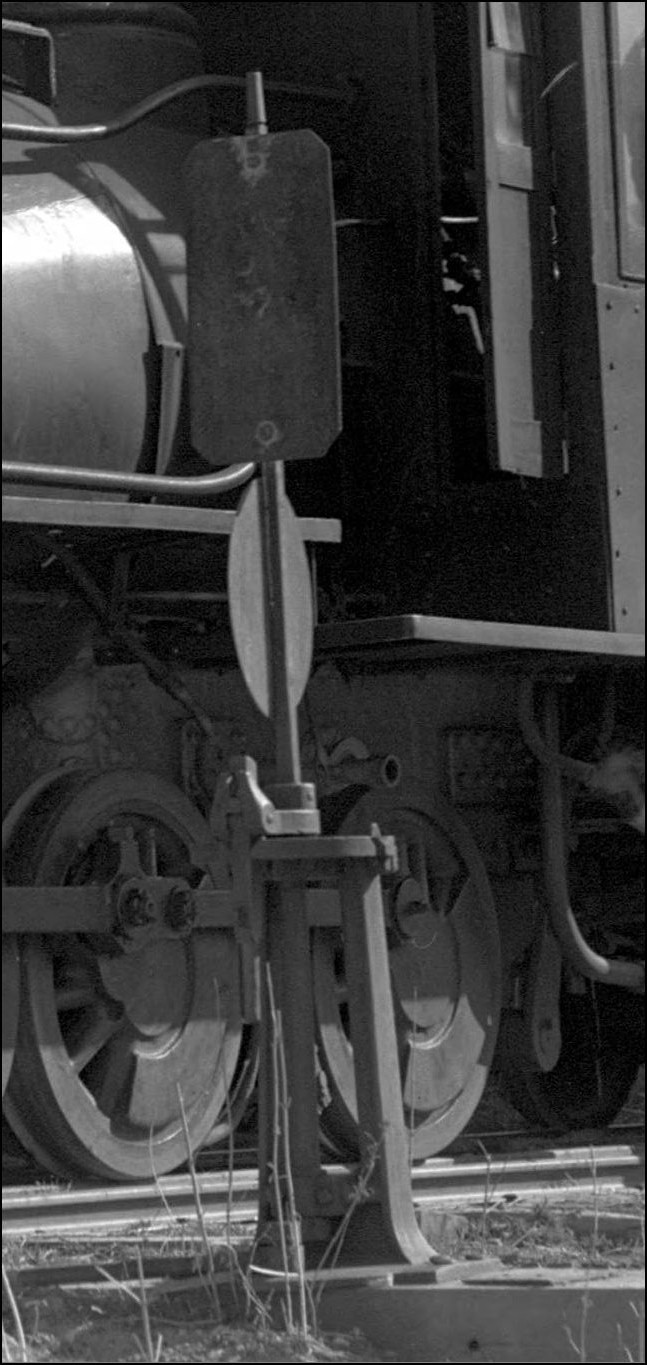 http://cdm16079.contentdm.oclc.org/cdm/singleitem/collection/p15330coll22/id/42287/rec/1 A comparison of the two types of Baseplates at the CRRM. 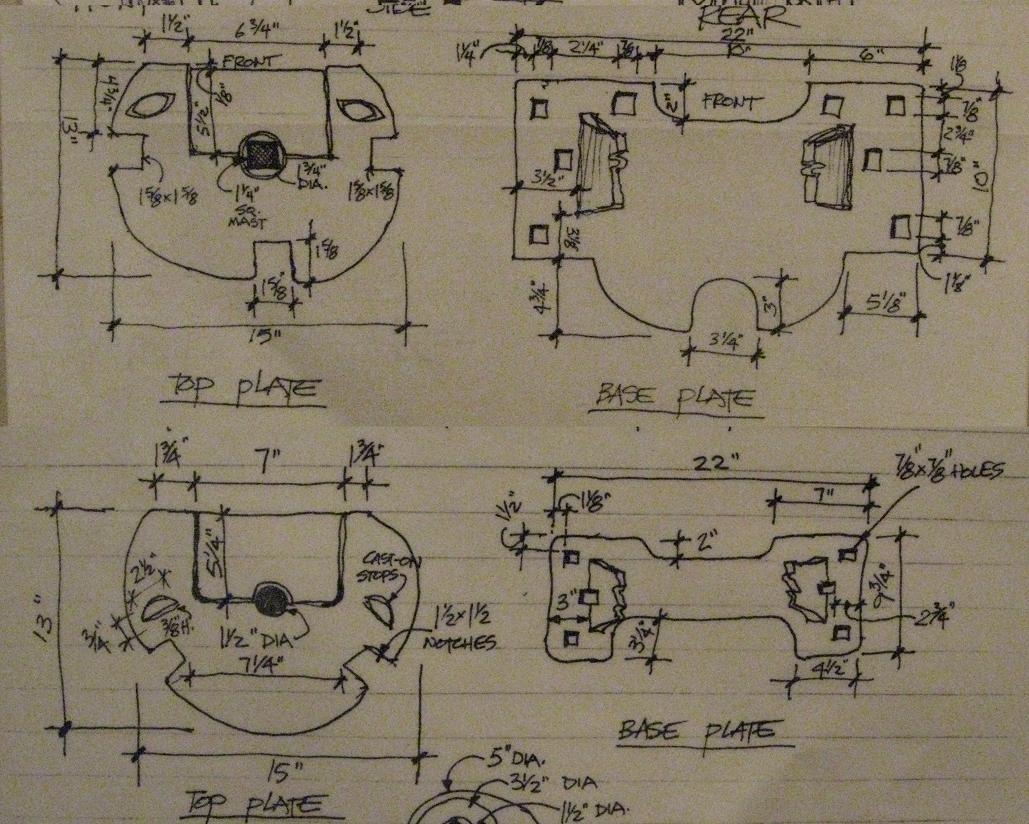 Joe Crea Original Drawing. Buda #10 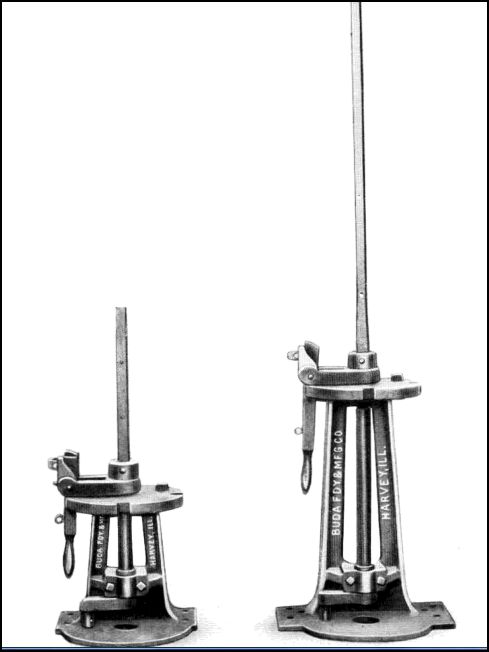 Buda #10-A 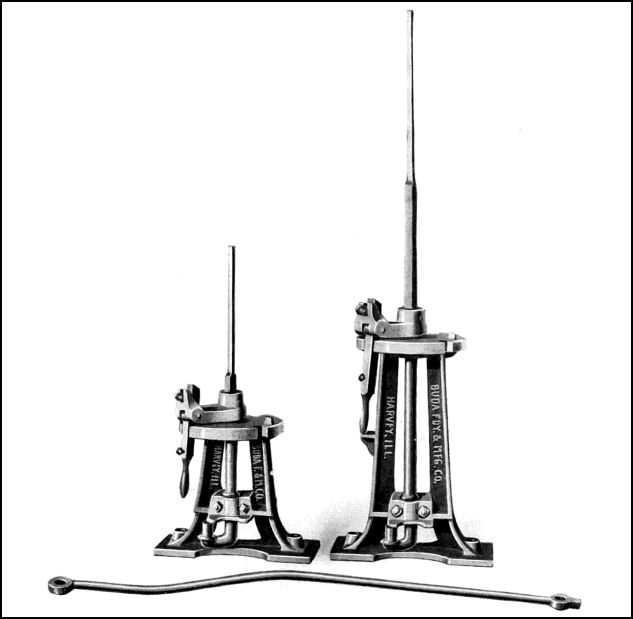 Buda 1907 Track Supplies and Railway Material Catalog on Google Books. Elliot at Chama. Unfortunately I neglected to shoot the otherside. Note how the centre of the Base-plate sits up proud and the cast Stops on the Top-plate are not as noticable as on the Otto Perry Silica stand. These differ from Joe Crea's drawings as well. 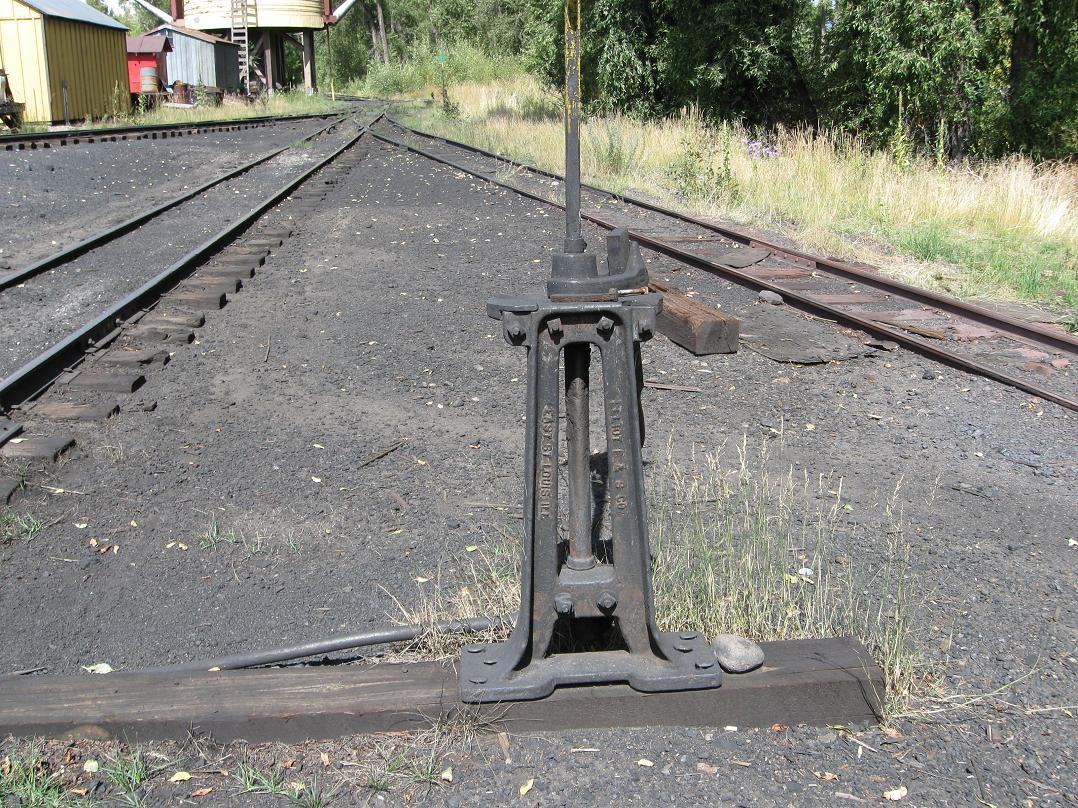
UpSideDownC
in New Zealand |
Re: How do you model Elliot OR Buda switch stands?
|
My versions, somewhere there are the masts and targets put away for "safekeeping", can't remember "where" in time for this photo.
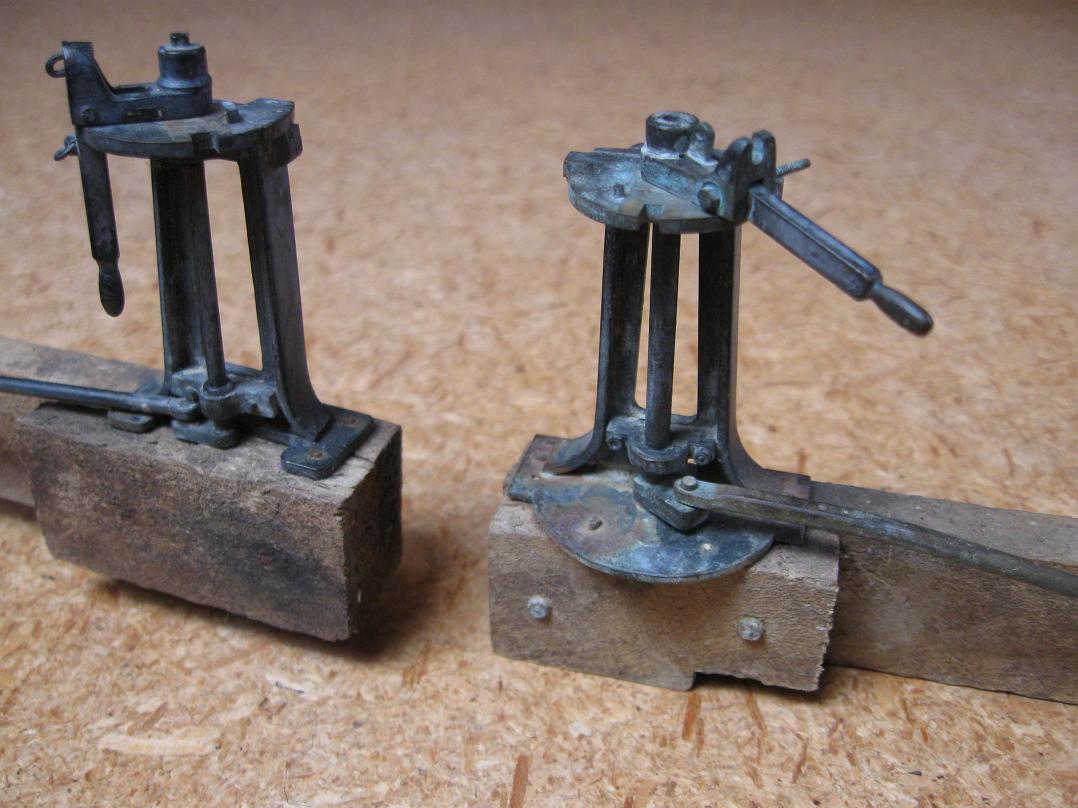
UpSideDownC
in New Zealand |
Re: How do you model Elliot OR Buda switch stands?
|
In reply to this post by Chris Walker
In most cases (Buda catalog, Joe Crea’s drawings, Chris’ models and the original thread picture at Como) the dogbone base is a 2-way stand, and the button base is a 3-way.
However, I think that’s just because the button-base has a longer crank pin, which allows 3-way switching, so the top has 3 slots in it. There’s a picture of the Como switch (with button-base stand) which shows that it’s actually being used on a 2-way switch (with split points, no less). |
Re: How do you model Elliot OR Buda switch stands?
|
In reply to this post by Chris Walker
Those are impressive models Chris. What scale are they?
|
Re: How do you model Elliot OR Buda switch stands?
|
Thanks Tim,
they're in 7/8ths, my dabble I had almost 20 yrs ago when I first started messing around with Brass. Also I should have done more dressing of the edges on hindsight. Only problem dabbling in larger scales is that it leads to bigger and better things.  
UpSideDownC
in New Zealand |
Re: How do you model Elliot OR Buda switch stands?
|
In reply to this post by Jeff Young
Jeff, you're on the ball with the base-plate variations between the two types of stands however, the crank length and thus the rotation distances are all the same. It makes no difference whether the turnout controlled is Blade or Stub as the throw is standardised. In the case of Blades, the Tiebar is adjustable between the Blades to ensure proper closure. The positioning of the locknotches in the Top-plate determine the orientation of the throw. You'll note the 90degrees seperation on a 180degree half circle for the Three-way stands with Two-way stands notched at 45degrees but still set at 90degrees apart on the Top-plate. The throw distance is still the same for both stands just the position of the locked-down lever changes. The Climax photo of the three-way there doesn't show enough detail to ascertain the Base-plate; there just aren't that many pictures of 3-ways on the C&S showing up clear enough. A nice shot of Garos shows a Three-way stand on a standard Stub application. Finding a picture of the dogbone Base-plate on the C&S has now become the focus of my searches. fwiw, the adaptation of throw using a full-sized Standard throw to that of 12lb mine rail throw distance was a challenge to me. Most model railroaders are fortunate to fabricate an "Omega" spring into the throw mechanism, I had to stay with the stock hardware and changed the distance of the throw connection from the axis of the column, this is in 1:1. 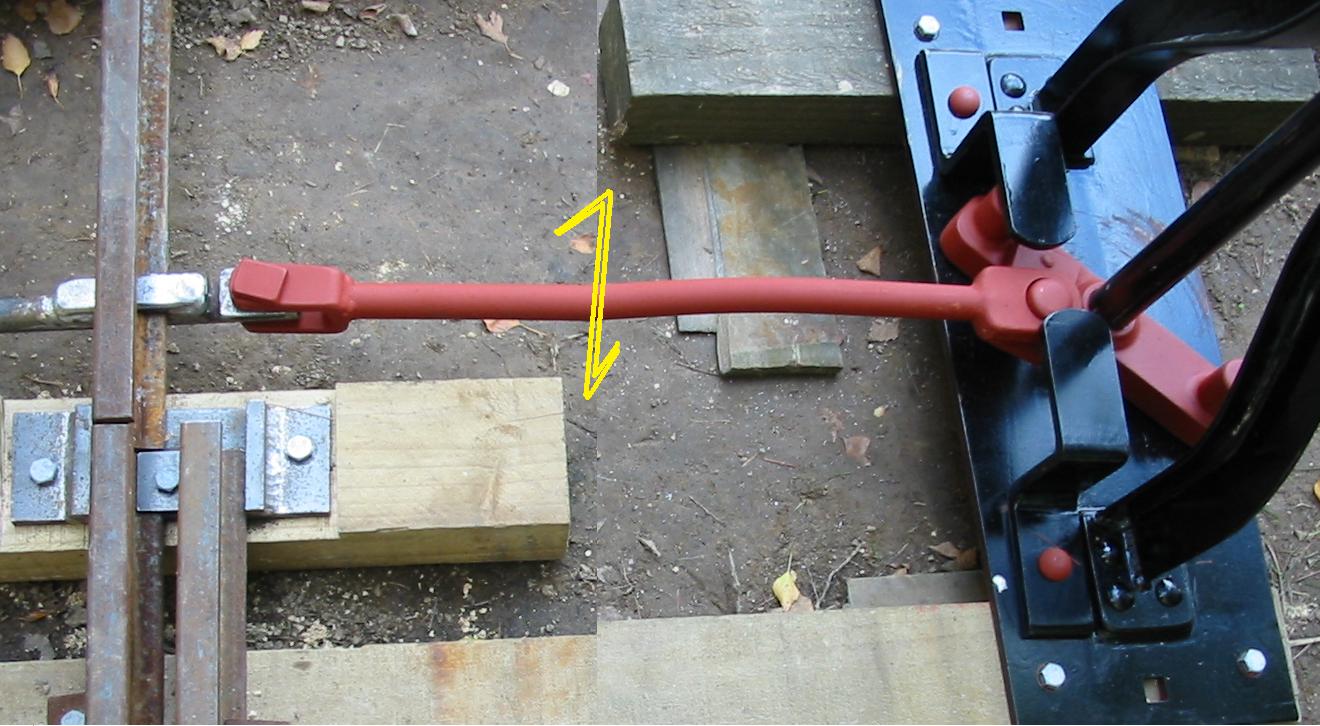
UpSideDownC
in New Zealand |
Re: How do you model Elliot OR Buda switch stands?
|
I thought I had found a dog-bone-based Elliot for Chris in Como, but it turns out while these are now in Como, they aren't original to Como.
The two Budas are 3-way (with half-moon-bases), while the Elliot is a 2-way (with dog-bone-base):  Close-ups of the casting marks: 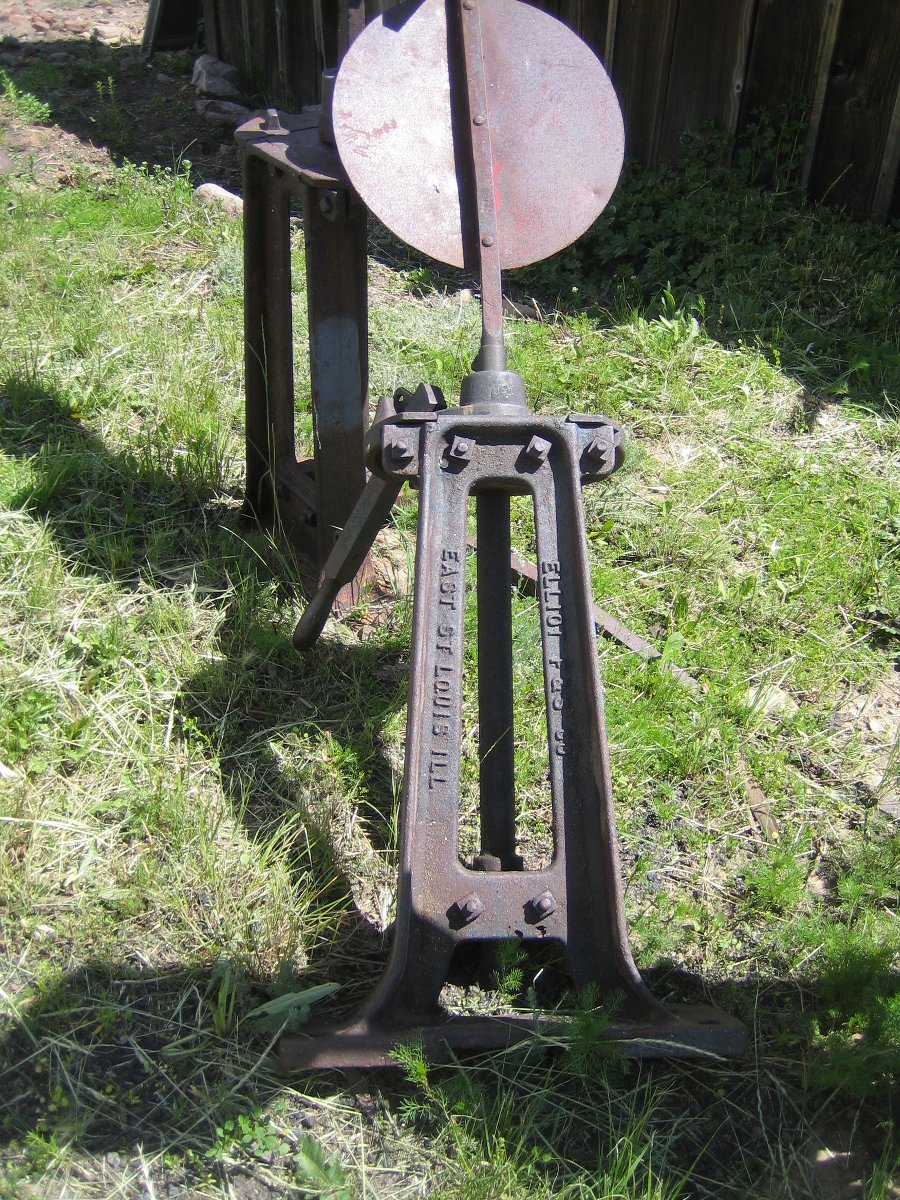 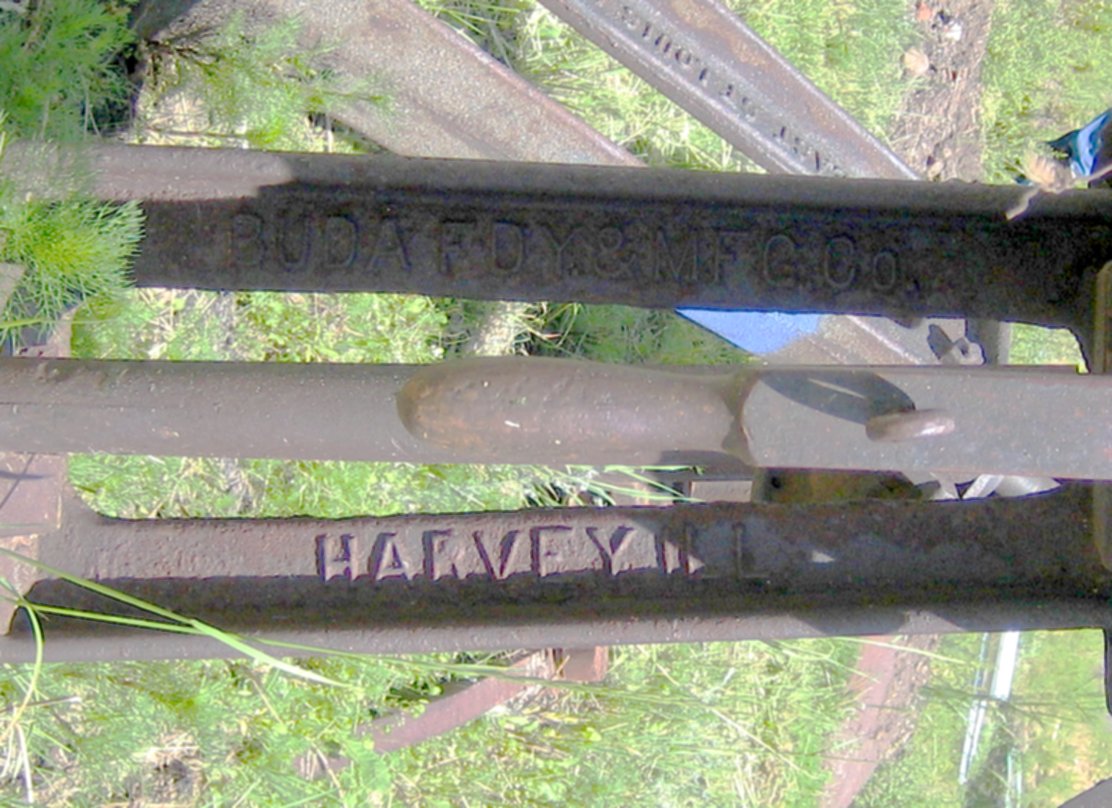 and a picture of the Buda base:  Cheers, Jeff. |
«
Return to C&Sng Discussion Forum
|
1 view|%1 views
| Free forum by Nabble | Edit this page |

